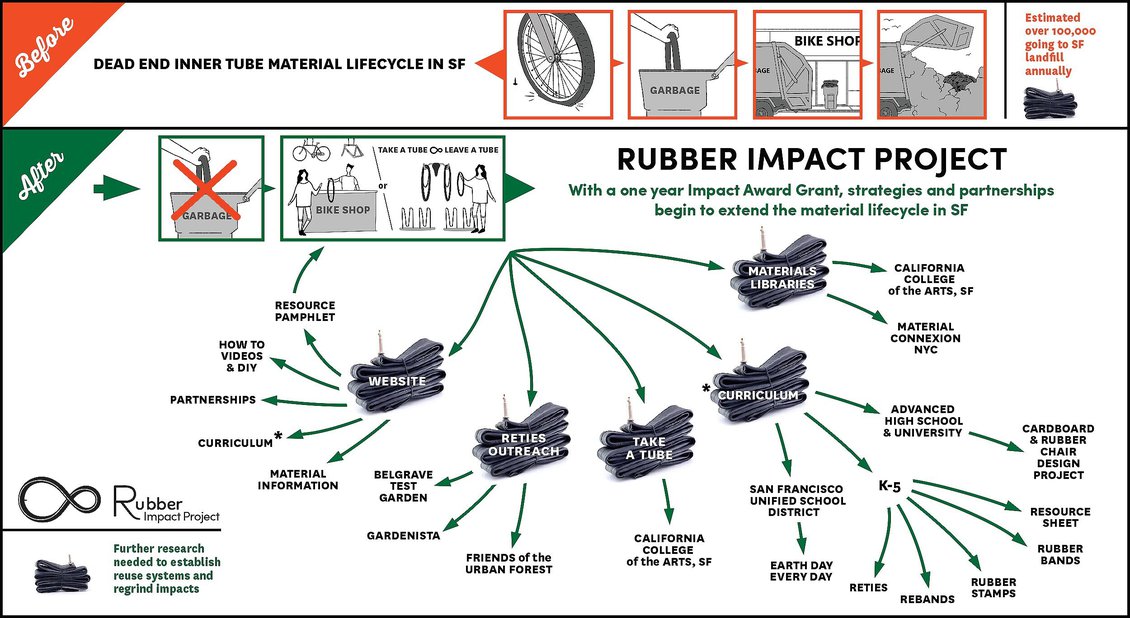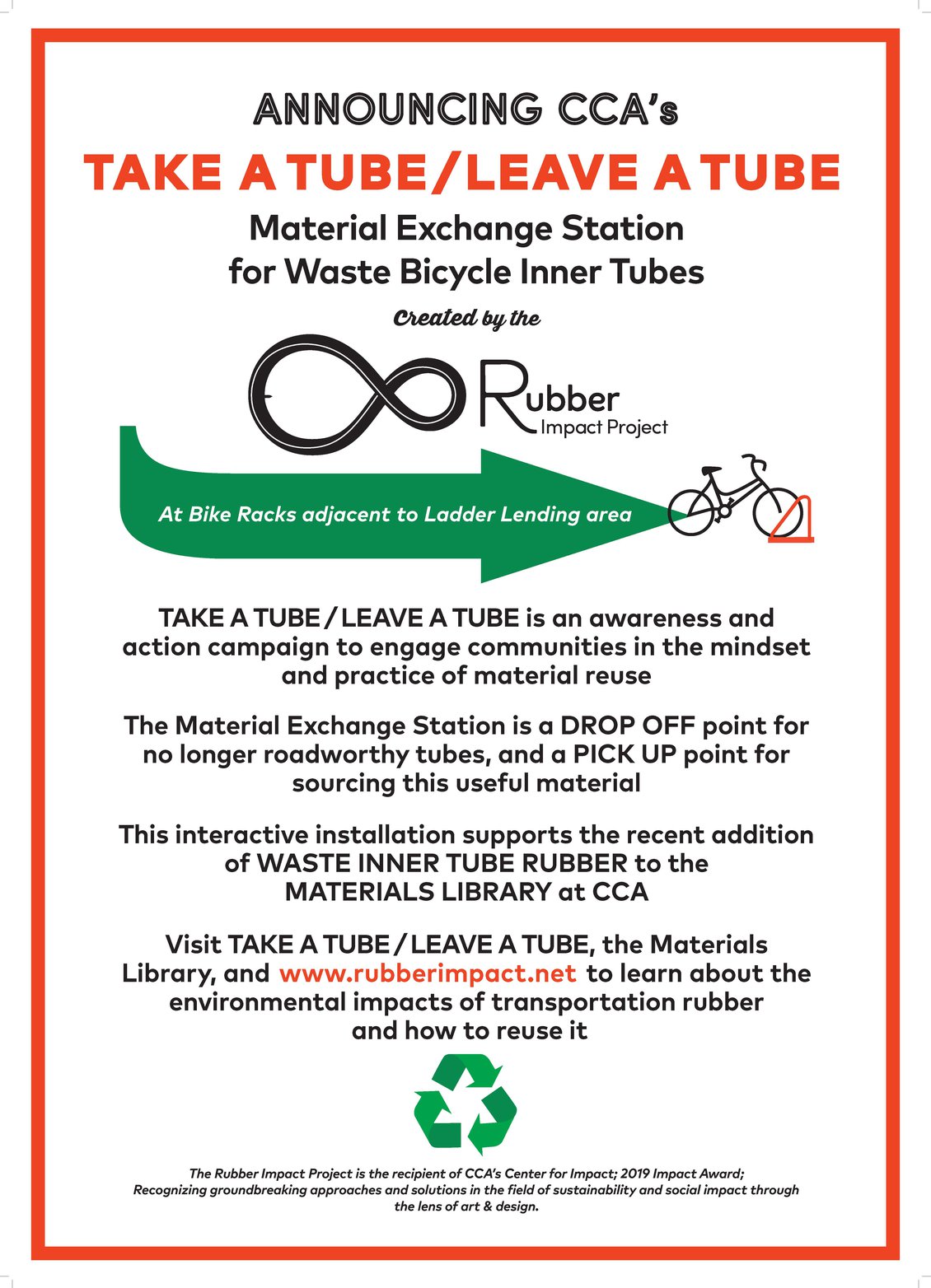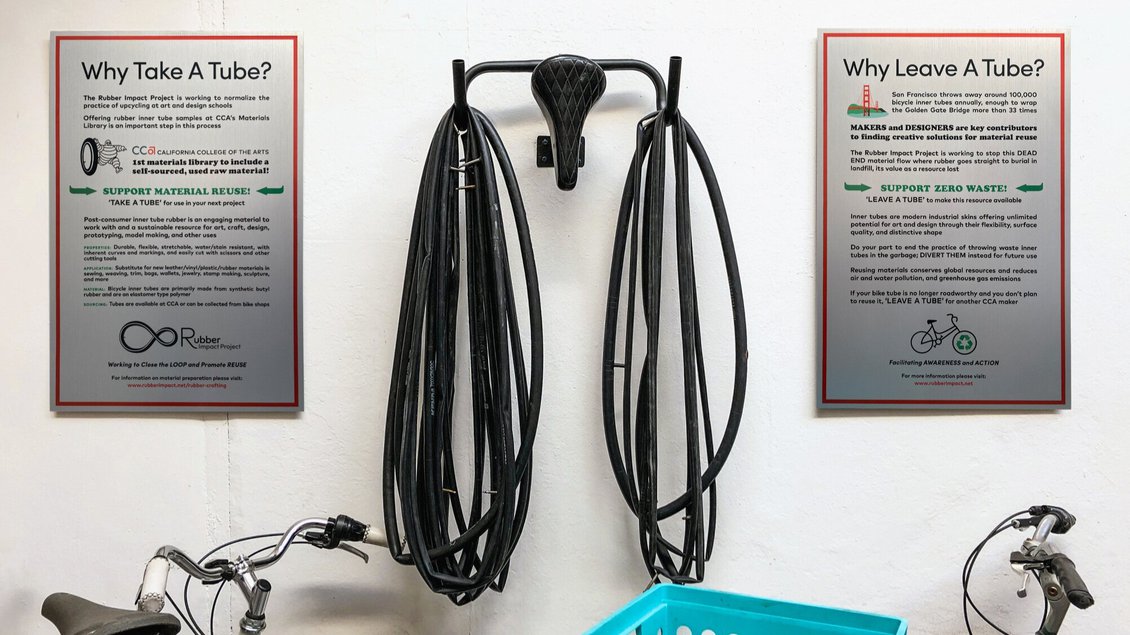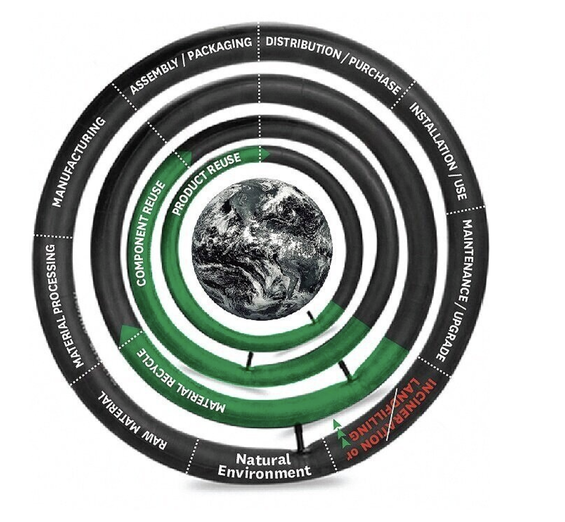Rubber Impact Awareness

Rubber Impact Awareness and Action Project
Receiving the $25,000 IMPACT Award from CCA’s Center for Impact validated both the social and environmental responsibility inherent in our project and our approach in leveraging design, art, education, communication, and material research. With early feedback from the Center we were able to craft a proposal that effectively communicated our wide ranging goals, as well as the opportunities we foresaw for our sustainability initiative. We were honored to have our project chosen and able to move forward in a way that would not have been possible without this financial assistance.
The grant allowed us to create a framework outside of working solely in the marketplace or solely in academia. We were able to engage in research and experimentation, create K-5 curriculum, test products and usability, and make necessary shifts based on new data and discoveries. The Center offered exhibit space to showcase our work and the unique qualities of the material. Initially our team was composed of Mandana MacPherson, project lead and CCA Industrial Design instructor who established waste rubber tubes as a design resource in the mid-1980s through her company Used Rubber USA, and taught with the material at CCA in the Fashion, ID, Interdisciplinary Studies, and Pre College programs; Gigi Obrecht, project coordinator, designer, and former CCA faculty member (Graphic Design and Graduate Design programs); and Mandana’s 2018 teaching assistant Ellen Field (BFA Industrial Design 2019). The team added Mandana’s 2019 teaching assistant Niko Sabah (candidate for BFA Industrial Design 2021), as well as alum James Seckelman (BFA Individualized Studies 2019), creating a dynamic working group of designers with a diverse skill set.
To combat what we saw as a dead-end material flow and to establish numbers of waste bicycle inner tubes in SF, we partnered with local bike shops to highlight this hidden issue. Our estimates showed San Francisco discards enough bicycle tubes every year to wrap the Golden Gate bridge 33 times. Focusing on education we partnered with SFUSD to use our curriculum as part of their Every Day Earth Day initiative and we set up a permanent functional and informational installation at CCA titled Take A Tube, Leave A Tube to provide context about inner tubes and promote the message that reusing materials conserves global resources and reduces air and water pollution and CO2 emissions. This “material exchange station”, located by the bike racks, offers CCA community cyclists a place to leave tubes and for others to take them for material reuse. To support this installation, our team supplied CCA’s Materials Library with samples to become the first materials library to include a self-sourced, used raw material. We created strategies for rubber reuse throughout the city, such as tree ties for Friend’s of the Urban Forest, and we tapped existing contacts and established new contacts locally, nationally, and internationally that will also prove valuable to future work. Additionally we created a richly detailed website to support the project. rubberimpact.net
Our project’s targeted disruption of the flow of inner tubes to landfill focused attention on waste tubes as a material resource for direct reuse in SF. The primary lesson learned was that deep systemic change continues to be needed in how we handle materials perceived as waste. Of promise, we found that an overwhelming desire and engagement exists for many potential stakeholders, yet more education and activism is needed to enact permanent solutions.

The Rubber Impact Project seeks to engage students of all ages, as well as the broader public, to adopt a mindset and culture of reuse; to create a waste flow that incorporates reuse of inner tube rubber into a circular rubber economy; and to pressure the rubber industry to move toward greater sustainability and environmental responsibility.

San Francisco discards over 100,000 bicycle tubes every year, enough to wrap the Golden Gate bridge 33 times. In this dead-end material flow, rubber goes straight to landfill, its resource value lost. Inner tube rubber is an extraordinary material with many potential uses once it can no longer function inside a tire. Reusing materials conserves global resources and reduces air and water pollution, and green-house gas emissions. So keep this material resource in play and support zero waste through material reuse.

Infographic:
Expanded Inner Tube Lifecycle for a Circular Transportation Rubber Economy